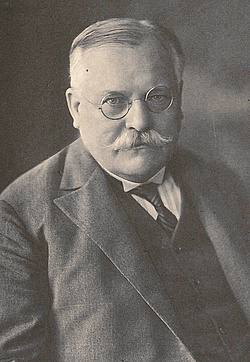A Great Project’s long Journey
Over decades the Monumenta Germaniae Historica (MGH) staff pursued extensive archive journeys to gather numerous precious charters of the Staufer monarchs. Between 1880 and 1885 the MGH entrusted the not yet edited documents on the late Staufer era to Eduard Winkelmann for a first and preliminary printing. The documents were published in two volumes, the „Acta imperii inedita saeculi XIII et XIV“.
On April 14th, 1904 the MGH central management conference decided to take the edition of the charters of Lothar III and the Staufer as a third series of the Diplomata into the programme. Emil von Ottenthal, back then chairman of the Instituts für Österreichische Geschichtsforschung, was appointed director, he became responsible for implementing the newly installed Diplomata department in Vienna.
Emperor William II becomes Mentor of German Research in Italy

At the same time – and in a totally different way – great opportunities arose specifically for collecting and editing the charters of Frederick II. On the occasion of two Mediterranean cruises, William II had been visiting the Staufer South of Italy. Paul Fridolin Kehr, Director of the Preußische Historische Institut (Prussian Historical Institute) in Rome, knew how to use the Emperor’s new enthusiasm for the Staufer to further his research ambition. In a memorandum recommended by the Emperor, Kehr pointed out the German researcher’s national mission in Italy, stressing in his argumentation the possibility of an edition of Frederick II’s charters. This was supposed to be done in accordance with modern diplomatic and editorial methods, developed and practised by Theodor Sickel at the Institut für Österreichische Geschichtsforschung.
A demarcation of interest with the Vienna Institute, approved by the MGH, resulted in entrusting the Preußische Historische Institut in Rome with editing and publishing the charters of Frederick II and his descendants. Existing material was transferred to the Institute in Rome, however World War I prevented the implementation of this plans for years. Nevertheless, the contemporary Deutsche Historische Institut in Rome collected “imperial charters and Reich documents“. Towards the end, it was mainly Wolfgang Hagemann who continued to gather some material, even if only selectively and occasionally.
Edition of Imperial and Royal Charters of the Late Staufer Era starts 1978
A determined resolution of the central MGH management became a prerequisite for working on a modern critical edition of Frederick II’s charters in anticipated ten volumes. During a conference on March 9th and 10th, 1978 it was decided to enter the edition of the royal and imperial charters of the late Staufer era (after 1197) into the programme and start the work. The rapid progress of the five volume edition of Frederick Barbarossa’s charters completed in 1990 by Heinrich Appelt in Vienna, had impressively proved the feasibility of even large-scale projects.
The eighties and nineties of the 20th century were mainly devoted to archive trips throughout Europe, each lasting several weeks. Initially the focus was on archives in Southern Italy, since the first volume of the future edition was supposed to cover the “Sicilian Monarchy”, hence the years of the still young and in the beginning still under-age Frederick as „Rex Sicilie, ducatus Apulie et principatus Capue“. But also all of the numerous archives throughout Europe were visited and researched comprehensively and systematically – just about every place where “Frederick” was presumed. Most of these travels ended around 1995, ever since the actual editing has become paramount.
The long-term project „Edition of Frederick II’s Charters“ is scheduled until the year 2034. At that time ten volumes with about 2.600 Staufer charters are supposed to be published – at intervals of three to three-and-a-half years.
